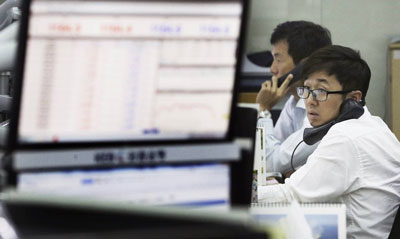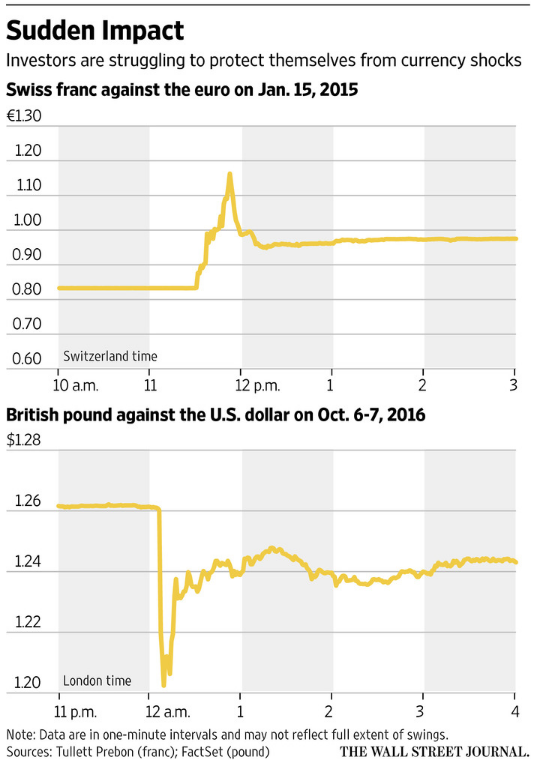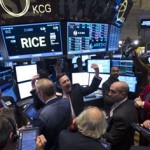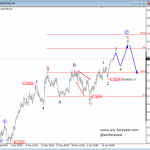Market Volatility Has Currency Traders Abandoning a Tool to Stop Losses

Some currency investors, worried that events such as the pound’s recent collapse could become more common, are abandoning an automated trading mechanism that was supposed to protect them from losses after big market swings.
The trading mechanism, known as a stop-loss order, is meant to sell an investor’s position as soon as a currency hits a preset level against another currency. Banks and electronic trading platforms often struggle to execute the orders at exactly the level an investor requested, resulting in trades below the indicated price even when markets are relatively calm.
The rise in “flash crashes”—sudden drops that often quickly reverse—has made the orders even more risky and ineffective, investors say. Stop-losses can lock in a low price during a burst of volatility, turning what was a sharp but temporary price decline into a permanent loss. These trading orders were once used across financial markets but after share-price flash crashes they fell out of favor among stock investors and exchanges; currency-market gyrations are now making foreign-exchange traders wary as well.
A report from the currency trading platform FXCM Inc. showed that between January 2015 and March 2016, 40% of stop-loss orders and similar trading mechanisms executed on its platform were filled below the price level that investors had requested.
This so-called “negative slippage” has become the norm for larger currency trades: About 95% of orders over $10 million were executed below investors’ chosen price in the first quarter of this year, according to the FXCM report. FXCM didn’t say by how much the trades were made below the stop-loss pricing level.
“I can’t tell you how many times I was completely burned by it,” said Paresh Upadhyaya, director of currency strategy at Pioneer Investments. “What’s the point of a stop-loss if I don’t get it done around the level I left in the market?”
He said stop-loss orders have been filled as much as half a percent off the requested price, which for multimillion-dollar trades could mean tens of thousands of dollars worth of additional losses. “It was just painful,” Mr. Upadhyaya said.
Analysts say the challenge for stop-losses is they are trying to hit a moving target. Investors select the level at which they want their position sold, but a trader or algorithm can’t always execute at that price before the market moves lower.
Some investors say stop-loss orders have contributed to recent flash crashes. Although analysts believe the initial catalyst for the pound’s crash on Oct. 7 was an algorithm or a mistaken trade, many say a chain reaction of selling—which likely included automated stop-loss orders—helped push the pound from $1.26 to $1.18 in just a few minutes.
U.S. regulators also cited stop-losses as a factor in the Dow Jones Industrial Average’s more than 1,000 point plunge in August 2015. The New York Stock Exchange this year stopped accepting stop-loss orders, citing the risks during volatile trading, although brokerages may still offer them.
Stop-loss orders remain popular among traders in oil, gold and other commodities. Many of those markets have seen volatility pick up in recent years, but have largely avoided the dramatic plunges that have hit the currency, stock and bond markets.
FXCM still offers stop-loss orders on currency trades but often recommends that traders use limit orders, which guarantee investors the price they want. If FXCM can’t fill the order at that price, it won’t execute the trade. “It’s important for FX platforms to offer a range of functionality as different traders like to trade in different ways,” a spokesman said.
Investors worry that volatile currency moves are growing more common as postcrisis financial regulation has forced banks to pare back trading and algorithms become an increasingly dominant force in the market.
A Bank of America Merrill Lynch report this month argued that liquidity in the foreign-exchange market has “materially worsened” even as official data indicates volumes remain stable. The bank’s analysis showed that foreign-exchange trades now create 60% more volatility than they did in 2014.
Collin Crownover, who heads currency management at State Street Global Advisors, said he grew wary of stop-loss orders in January 2015, when the euro plunged by about 30% against the Swiss franc after the Swiss National Bank unexpectedly lifted its cap on the currency pair.
Mr. Crownover was one of many currency investors who lost money that day on his Swiss franc positions. “It wasn’t a fun day,” he said. “That got us thinking, could these issues crop up somewhere else?”
After the pound’s crash this month, he decided, “we need to consider other alternatives” to stop-loss orders.
He is weighing another trading mechanism known as a call level order, in which the firm would receive a phone call from his bank once the trigger level is hit to confirm he wants to sell the position and take the loss.
Paul Lambert, head of currency at money manager Insight Investment, says he has moved away from automated sell orders and prefers to use options contracts, or to close positions entirely if he is worried about overnight volatility.
Not everyone is ready to ditch stop-loss orders. Brad Bechtel, a managing director in foreign-exchange at Jefferies Group, says he hasn’t seen much change in his clients’ use of them.
“There’s still a need for people to use them to protect themselves,” he said, adding that investors accept “there’s an element of risk.”
Alternatives to stop-loss orders have their drawbacks, too. Buying options or closing positions frequently would be more expensive, and some money managers are prevented by agreements with clients from using those orders.
Chris Stanton, chief investment officer of hedge fund Sunrise Capital Partners, said his firm’s trading decisions are driven by mathematical models, but he is wary of relying fully on automation.
The firm’s algorithms are designed to wait for human input before selling in illiquid periods such as the pre-Asian trading session, where price spikes can be extreme.
“This is what you live in: micro volatility that drives things to where it shouldn’t be,” Mr. Stanton said.
Source: WSJ – Market Volatility Has Currency Traders Abandoning a Tool to Stop Losses






























